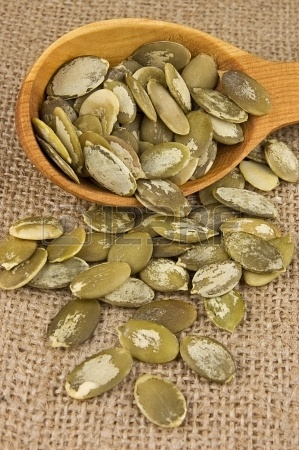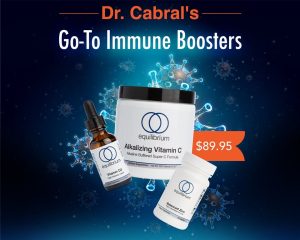During a recent trip to Trader Joe’s I found myself surrounded by dozens of pumpkin based products. There was pumpkin bread, pumpkin muffins, pumpkin granola, pumpkin butter, pumpkin ice cream, pumpkin chai tea and even pumpkin coffee! And of course I was greeted by those golden beauties on my way in, each one of them vying for my attention in the hopes of becoming my Jack-O-Lantern…
Yes I definitely felt a little “Pumpkin overload”, yet I absolutely love this seasonal squash.
 [Image credit: tuvi / 123RF Stock Photo ]
[Image credit: tuvi / 123RF Stock Photo ]
My 6 year Sabrina approached me with a sparkle in her eye, “Mommy, I found a sweet little pumpkin so we can make a pumpkin pie.”
Ah yes, pumpkin pie!
Although I grew up in France, I learned to enjoy this delicate American classic. Mom is after all from Texas, and we always celebrated Halloween and Thanksgiving with fellow Americans who lived in Paris. Although you will find pumpkins in France, it’s most commonly used as a vegetable, in hearty soups or stews.
I did buy the little pumpkin Sabrina had found, but for now, the pumpkin pie will have to wait. I decided to make one of our favorite seasonal soups instead.
I wish pumpkin season lasted a little longer as it truly is a delicious and highly nutritious food with many healing properties.
Pumpkin is a fruit of the cucurbits family of climbing or trailing vines, which includes the squash, pumpkin, cucumber, gourd, watermelon, and cantaloupe.
The name pumpkin comes from the Greek name “pepon” which means large melon, though the fruit itself is native to Central America.
Native Americans left noting to waste, and had many uses for pumpkin and its seeds; mostly for food and medicine. They also dried long strips of pumpkin to make sturdy, yet pliable, mats for their homes.
And yes, pumpkin does make a delicious pie!
The origins of the pumpkin pie date back to colonial times. Colonists would slice off the top of a pumpkin, remove the seeds and fill it with milk, honey and spices. Then, after placing the cap back on, they baked in hot ashes until the inside was soft and all the flavors blended together. They enjoyed this delicious treat fresh out of the skin. That sounds delicious doesn’t it? I think I’m going to have to make a “home baked” version of this, with almond milk, raw honey and lots of spices… sprinkle with a handful of chia seeds when it’s done… yum!
Pumpkins are 90 percent water, and the remaining 10 percent is brimming with essential vitamins and minerals for good health.
Here a just a few health benefits of pumpkin:
High in Beta Carotene
The bright orange color of the rind and flesh is a dead giveaway to its high concentration of the antioxidant beta-carotene. Beta-carotene – or carotenoids, assist in staving off the free radicals, and helps in preventing premature aging, cardiovascular diseases and other infections.
Rich Source of Vitamins A & C, Magnesium, Potassium and Zinc
These nutrients present in pumpkin offer countless health benefits. Vitamin A contributes to healthy eyes and gives your immune system a boost. While Vitamin C, also good for your immune system, promotes the production of collagen and leads to healthy skin. Magnesium is particularly important for women as it contributes to healthy bones, and helps prevent osteoporosis.
Pumpkin Seeds

Image credit: catchat / 123RF Stock Photo
Pumpkin seeds, also called Pepitas, are a staple food in Mexican cuisine.
They are a rich source of protein, with approximately 7 grams per ounce. This makes pumpkin seeds a wonderful component of a vegetarian or vegan diet, They can be consumed on their own as a simple snack, or tossed into granola, salads or sprinkled over soups. I often make home made trail mix with almonds, cashews and pumpkin seeds, tossed with dried cranberries, raisins and shredded coconut.
Pumpkin seeds are also a great source of phytosterols, plant based essentially fatty acids, the health benefits of which are numerous. The composition of these fatty acids are the same as good cholesterol, and they help in reducing the blood cholesterol levels.
Essential Fatty Acids (EFA’s) also promote healthy skin and improved brain power — something moms and teenagers alike can benefit from.
You can enjoy pumpkin seeds raw or roasted in the oven. Sprinkle a little hymalayan salt, turmeric or other spices before roasting for a delicious crunchy treat. Make sure to keep oven temperature to a maximum of 350 to preserve the nutrients in the seeds.
Pumpkin seeds are the only seed that is alkaline-forming. This alkaline-forming property is most commonly found in dark leafy greens. They help balance blood Ph levels by reducing the acidity and creating an environment resistant to disease. This makes pumpkin seeds a powerful ally during the cold and flu season, so don’t discard theses little gems when you carve you Jack-O-Lantern.
And if you have trouble getting to sleep you’ll be happy to know that pumpkin seeds are high in L-tryptophan which promotes sound sleep and has been shown to aid in fighting depression.
And if all of this isn’t enough to convince you that pumpkin seeds are packed with goodness, they have also been shown to work as a natural anti-inflammatory in patients suffering from arthritis.
Be careful though, these little seeds pack quite a punch with about 559 calories per 100 grams!
As you can see there is far more to the pumpkin than meets the eye. A visit to the pumpkin match and the ensuing activities are a perfect opportunity to teach your little ones the marvels of this seasonal superfood. As you settle down to carve a spooky or sweet face into your pumpkin, remember to save the wonderful flesh and seeds, and then have fun finding ways to savor them!
You can roast the seeds for a delicious crunchy treat, and come up with all sorts of delicious recipes for the nutritious flesh.
With its sweet, somewhat nutty flavor, pumpkin is a wonderful food to add to salads, soups and deserts.
Cut it into cubes and roast with all sorts of fall vegetables, such as zucchini, sweet potatoes, peppers, acorn squash, asparagus… add some fresh thyme or sage and drizzle with a little virgin olive oil. Enjoy them warm as a delicious side dish, or cooled with a little humus for a delightful veggie wrap.
The simplest way to cook a pumpkin, if you are not carving it for Halloween, is to bake it whole in the oven. Heat the oven to 350 and bake for about an hour. After your pumpkin has cooled, remove the seeds and scoop out the tender flesh. Add it to quinoa with green beans and garlic for a scrumptious vegetarian dish.
You can also mash the cooked pumpkin with potatoes, or add it to your pancake batter with a dash of your favorite spices for a sinfully delicious, but oh so healthy breakfast!
What’s your favorite way to savor a pumpkin?
Scrumptious Tid-Bit
Pumpkin Nutritional Facts:*
(1 cup cooked, plain)Calories ………………… 49
Protein ………………….. 2 grams
Carbohydrates ……….. 12 grams
Dietary Fiber ………….. 3 grams
Calcium …………………. 97 mg
Iron ……………………….. 1.4 mg
Magnesium …………….. 22 mg
Potassium ………………. 564 mg
Zinc ……………………….. 1 mg
Selenium ………………… 0.50 mg
Vitamin C ……………….. 12 mg
Niacin …………………….. 1 mg
Folate …………………….. 21 mcg
Vitamin ………………….. A 2650 IU
Vitamin ………………….. E 3 mg*University of Illinois, “Pumkins and More”


I have recently started eating pumpkin seeds and found they are quite nice.
I’ve always been a bit of a fan of pumpkin with my roast dinner or a great soup. There are so many things I should try – but I think i’ll go without the pumpkin coffee!